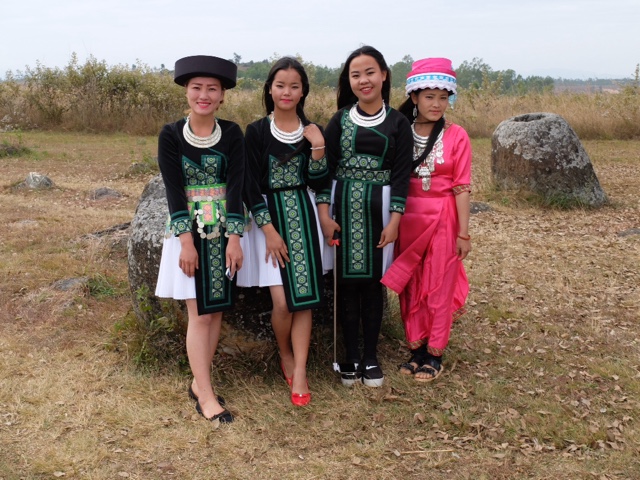Ruth: Happy New Year! We are enjoying the first rainy day of our trip by sitting around the fire at our guest house. The fire pit is made from the casing of a US cluster bomb dropped on Laos in their Secret War on the country. As the fire starts to heat up, our host tells us more about the War and its continuing aftermath for the Laotian people. As a young boy he lived in a village located near a location where the Americans had a CIA base during the War. This is still not officially approved information, but his family and village were all well aware of the base. The area around the base is still closed and completely off limits to the public. He told us that he and his friends would find and play with the "bomblets" that were peppered across their community. After witnessing a number of tragic accidents in the village, his father moved the family to Phonsavan where they would be safer. He described how he was the lucky one, as his two best friends who remained in the village were both killed by unexploded ordinance (UXO).
Yesterday we visited an organic, fair trade silk farm that trains local village women in all aspects of silk production. Even in the morning the ladies had the Laotian music cranked and were starting their New Year's Eve fun.
We are slowly collecting a clan of cyclists and are now a group of six. We all met for dinner at an Indian restaurant before heading back to the fire pit for the evening. Gord and I celebrated the New Zealand New Year and went to bed early, but the fun went on without us. Fortunately we missed the beer showers around midnight.
Today I went for a wonderful massage. My masseuse was a former farmer who lost both eyes from UXO. With the support of a local group he retrained in massage and now works with another blind man in their massage clinic. I have been told that at least one percent of the population of Laos is missing arms or legs from the War or UXO. If we factor in the fatalities and the other injuries the scale of the ongoing tragedy is frightening.



















































